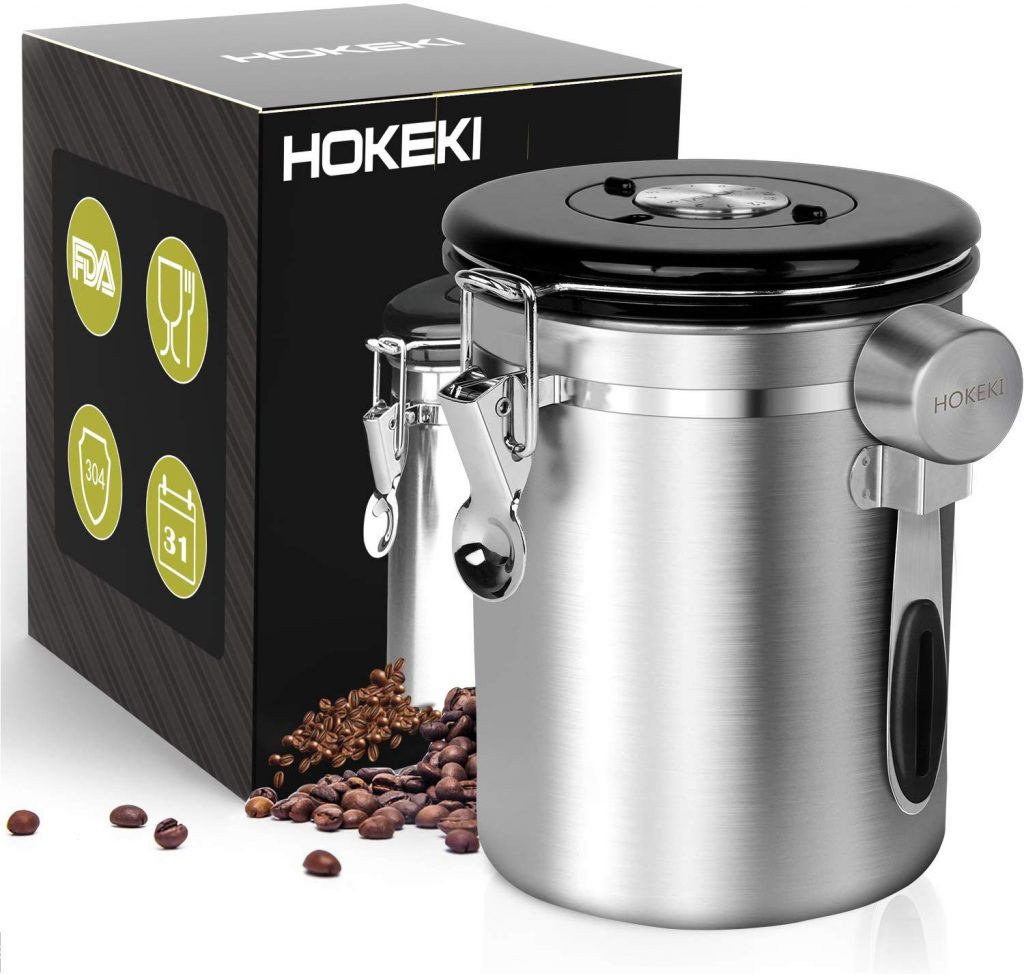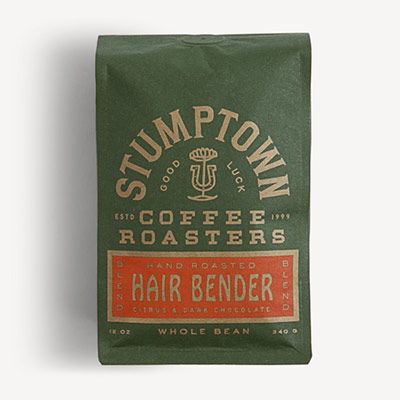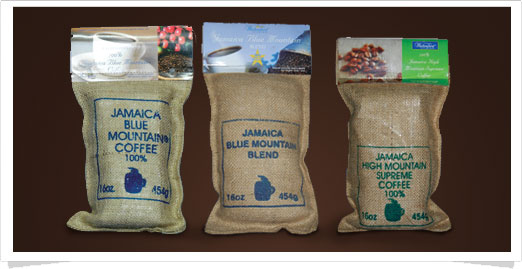The final flavor of a cup of coffee depends on many things. Temperature, pouring speed, brewing technique – all of these variables are critical components when it comes to coffee’s final flavor. But all of these components are nothing without the best coffee beans, and that’s what we’re going to be discussing in detail below.
But singling out one particular bean as the best or greatest would be pretty impossible. Instead, we’re going to categorize different types of beans according to what they’re best for.
Have you ever wondered what beans would be best to make espresso? What about the best coffee beans in Africa? In an effort to answer these questions we buried ourselves deep in anything we could find related to coffee lore.
We’ve done our research and checked it twice, and managed to cobble together the definitive list of the best coffee beans – for everything.
The Best of the Beans
(Click any coffee name underlined in orange to load its updated price in a new tab)
Best Coffee Beans for French Press
Due to the nature of the French press’ extraction method, the beans used are going to have to be a medium to coarse grind. This means absolutely no pre-ground coffee allowed. To ensure you get the correct coarseness so that no finer particles make their way into the final product, it’s advisable to grind your own beans.
And while you can technically use any bean, the best coffee for French press is usually a medium or dark-roasted bean, which provides the optimal flavor. These beans contain a higher concentration of oils which the French press immersion method is adept at bringing out. Ultimately all of these make their way into the final brew, resulting in a richer, more intense flavor.
Below we’ve listed three of our favorites, click the coffee name to load its updated price:
- Sleepy Monk French Roast Sumatran
- Peet’s Coffee Major Dickason’s Blend
- Ethiopian Yirgacheffe (Volcanica)
Best Highly Caffeinated Coffee Beans
Sometimes you just need that extra kick in the morning to deal with life. We get it, and, luckily for you, so do many coffee growers and roasters out there. They’ve supercharged the caffeine content of their beans to bring you some of the strongest coffee on the market.
Be warned – if you have any serious heart conditions or are prone to seizures, you’ll probably want to stop reading this section now.
Short of filling up an IV with pure coffee, here are some of the most high-octane beans that you can use to jumpstart your day click the coffee name to load its updated price:
Best Decaf Coffee Beans
We try not to mention the “D” word around the Caffeine Fiend offices too much (some people get triggered). That being said we understand that some coffee fans out there want the taste of coffee without the kick, so we decided to include a few great decaffeinated beans in this list:
Best Low Acid Coffee Beans
Some people get some adverse reactions if they drink coffee too frequently or the coffee they drink is too strong. Throat burn, an upset stomach or a runaway heartbeat are just a few of the possible symptoms. When this happens it’s likely due to the high acidity content of the beans.
But that doesn’t mean you should give up drinking coffee altogether. You just need to get smarter about your bean choice. Enjoy your coffee without any negative side effects with these low acidity beans:
Best Coffee Beans for Espresso Brewing
A shot of espresso is about so much more than just its taste (although this is undoubtedly a very important factor). The aroma, the texture, the creme – these are all essential parts of the espresso experience. Bringing out the best of these qualities is also heavily dependent on the beans being used.
The best coffee beans for espresso are generally a medium to dark roast. Check out some of favorites:
Best Coffee Beans for Cold Brew
When it comes to cold brew many people are divided on what constitutes the best bean for brewing. Many prefer more acidic light to medium roasts as cold brew tends to eliminate a lot of coffee beans’ natural acidity. Others swear by dark roasts as they tend to accentuate the dark, chocolaty intense aromas of the cold brew.
With that in mind, we put together some of our favorites:
Best Single Origin Coffee Beans
Many people – ahem, coffee purists – prefer single origin coffee. The reasoning is that it allows them to really isolate the distinct characteristics imparted to the bean by the particular growing conditions of that region. These beans will only come from one specific area, hence the name “single origin.”
Here are some of the most revered:
Best African Coffee Beans
In recent years the coffee beans coming out of Africa have absolutely floored the global coffee community. With lush, tropical climates, certain regions in Africa provide some of the best and most favorable growing conditions in the world. The resultant beans are some of the most flavorful and aromatic, and demand for them has spiked dramatically.
Produced mainly in Kenya, Ethiopia and Tanzania, here are our favorites:
Best South American Coffee Beans
While African beans have come into the global spotlight recently, it’s hard to displace the reigning champs when it comes to coffee production. South America has been and still is the coffee producing goliath of the world. With hot, verdant and fertile landscapes, almost every country in the continent is well-suited to produce vast amounts of high quality coffee.
Best Jamacian Blue Mountain Coffee Beans
Jamacian Blue Mountain coffee is well renowned for its broad yet delicate flavor profile. It comes from the Blue Mountains of Jamaica, 7500ft above sea level. It’s the highest mountain range in the Carribean, and provides pristine growing conditions for this Arabica bean.
They’re not the cheapest beans are the market, but they are some of the best. Here are Jacqueline’s (our very own Jamaican writer) Top 3 Choices:
Best Coffee Beans for Americano
When making an americano you’re going to want to use the same type of beans as you would when making an espresso. The reason for this is because an americano is essentially just a shot of espresso with added hot water, so the type of beans used are going to be the same.
Since we already discussed which are the best espresso beans, we’re not going to repeat ourselves. But here are three more options unless you couldn’t make up your mind the first time:
The Final Guide: How To Get The Best Of Your Best Coffee Beans
Now that you have a list of what are the best type of beans for any given coffee scenario, it’s helpful to know how to use them. With this little guide we’ll walk you through everything you need to know about getting the best out of your coffee beans.
• Always go Whole
This should be the first rule in your coffee bible – always buy whole coffee beans. What that means is that you coffee should never be pre-ground. We’ve done our best to ensure that every bean on this list fits this criteria.
Why are we so fervently against coffee of the pre-ground variety? Because buying pre-ground means sacrificing freshness. Pre-ground beans will have been exposed to a lot of air even if they’re eventually vacuum sealed, and this will compromise the final flavor in a big way.
By waiting until the last possible moment to grind your beans, you’re getting the freshest possible product and the best possible tasting coffee. That’s three “possibles” in one sentence, just to show that we’re serious. On top of that, grinding your own beans allows you to know exactly what’s going into your coffee blend.
• Know your Roast
Roasts generally fall into four distinct categories: light, medium, medium-dark, and dark roasts. Understanding different roast types will help you know what flavors to expect, which method of coffee making they’re better suited to as well as the caffeine content of the bean.
Light roasts have the lightest color (hence the name) and are roasted for the shortest period of time. They generally have the highest caffeine content out of all beans, and their taste tends to be sweeter than other roasts.
Medium roasts have a much browner finish than other roasts. They’re way less grainy than light roasts, have a lower caffeine content, and exhibit a more balanced flavor, acidity and aroma profile. Like light roasts they all have a non-oily coating.
Medium-dark roasts have a darker color and a more intense flavor. They’re roasted for considerably longer than light roasted beans, and tend to have a little oil on their outer surfaces. The flavor profile will be bolder, richer and stronger than the roasts before it.
Dark roasts are the darkest beans of the bunch. They have a very shimmering, oily outer surface that looks almost black when finished. They have a strong aroma when brewed, and their flavor profile features a full bodied, bitter taste with some chocolate and caramel notes on top.
• Storing your Beans
Once you buy your beans you’re going to want to store them properly in order to ensure that they stay as fresh as possible. Many roasters and manufacturers sell coffee already sealed in airtight bags with one-way valves to let CO2 out but doesn’t let air in. If this is the case, then leave it as is.
If, however, you buy your beans directly from a coffee shop and they give it to you in a paper bag, then you’re going to want to transfer it to an airtight container as soon as possible. The HOKEKI airtight coffee container is your friend in this regard.
Click here to check its latest price.

But why such stringency when it comes to storing coffee? Well coffee can go stale fairly quickly. The longer that it’s exposed to air, the less flavorful the beans become. You really only want to expose coffee to the air when you’re getting ready to grind and brew it.
Once you have a container for your coffee you’re going to want to store it in a place that’s both dry and dark. Treat it much like you would a bottle of wine; somewhere far from moisture and the damaging effects of direct sunlight. Never store it in the fridge as it will likely absorb odors from whatever food you’re also keeping in there.
• Grinding your Beans
Beans aside, the way in which you grind them is going to have a massive impact on the final flavor of your brew. We wrote pretty extensively on the best type of grinder for making optimal French press coffee, but way your coffee is ground is important no matter what style you prefer.
For espresso, for example, you’re going to want a very fine grind. The reason is that the coffee has to be condensed into a small, tight puck of coffee which then has pressurized water forced through. If the grind is too coarse it won’t allow for proper extraction to occur.
Use the following list a guide of what type of grind is used for a particular coffee brewing method:
- Coarse – French press, percolators, or a vacuum pot.
- Medium – Flat-bottomed drip coffee makers.
- Fine – Conical drip coffee makers.
- Very Fine – Espresso machines.
Having a grinder on hand also means that you’ll be able to grind your coffee whenever you want it, ensuring that your coffee is as fresh as possible.




























